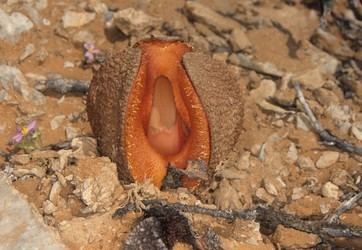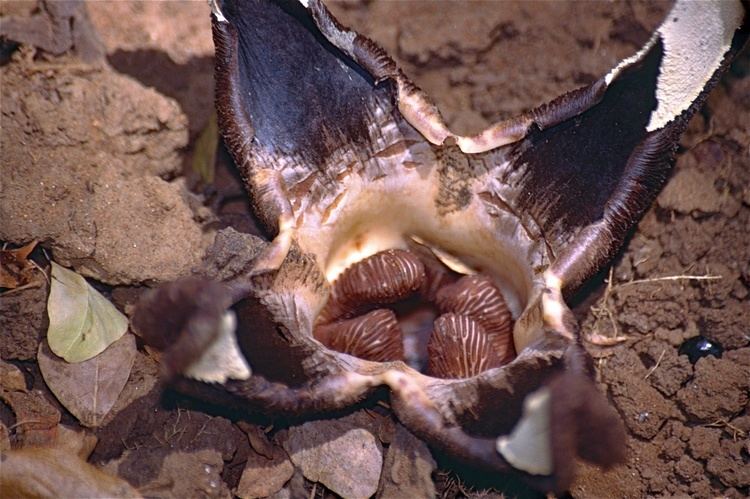Kingdom Plantae Subfamily Hydnoroideae Rank Family | Order Piperales Scientific name Hydnoraceae | |
 | ||
Similar Hydnora, Lactoridaceae, Prosopanche, Hydnora africana, Piperales | ||
Hydnoraceae
Hydnoraceae was a family of parasitic flowering plants in the order Piperales. It is now submerged in the Aristolochiaceae. It contains two genera, Hydnora and Prosopanche:
Contents
- Hydnoraceae
- How to pronounce hydnoraceae
- Description
- Ecology
- Biochemistry
- Genomics
- Classification
- References
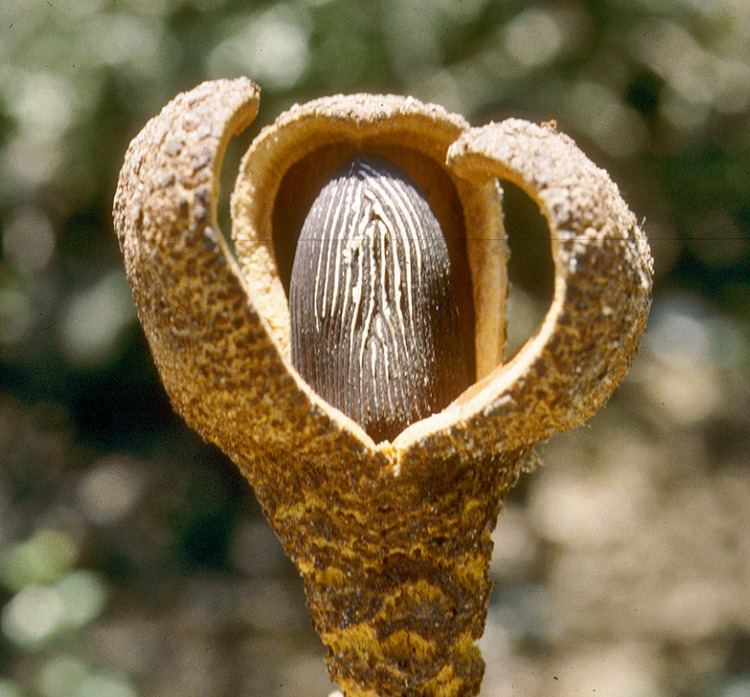
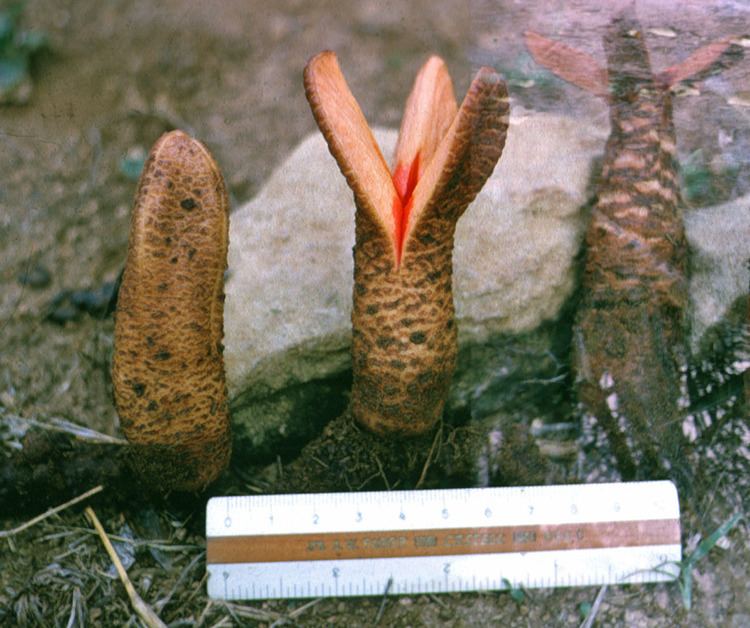
Members of this family have been described as the strangest plants in the world.
How to pronounce hydnoraceae
Description

The most striking aspect of the Hydnoraceae is probably the complete absence of leaves (not even in modified forms such as scales). Some species are mildly thermogenic (capable of producing heat), presumably as a means to dispersing their scent.
Ecology
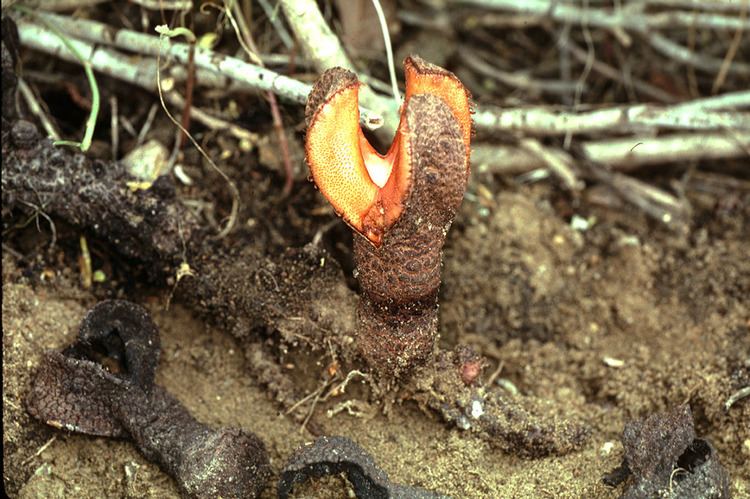
The plants are pollinated by insects such as dermestid beetles or carrion flies, attracted by the fetid odor of the flowers. In Hydnora africana there are bait bodies with a strong smell, whereas in Hydnora johannis the scent comes from a region at the tip of the perianth called a cucullus. The flowers may be above ground or underground. The fruits have edible, fragrant pulp, which attracts animals such as porcupines, monkeys, jackals, rhinoceros, and armadillos, as well as humans. The host plants, in the case of Hydnora, generally are in the family Euphorbiaceae and the genus Acacia. Hosts for Prosopanche include various species of Prosopis and other legumes.
Biochemistry
The plants contain high levels of tannins.
Genomics
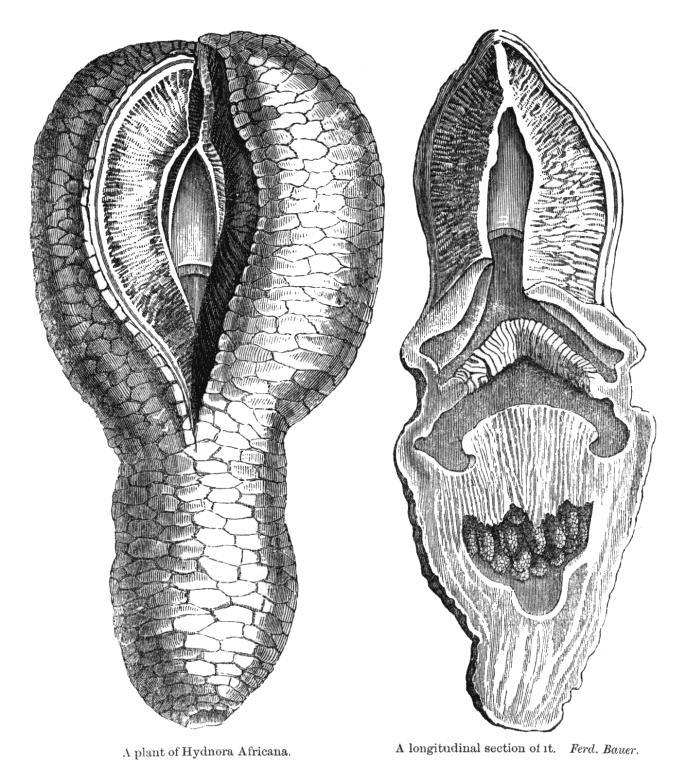
The complete plastid genome sequence of one species of Hydnoraceae, Hydnora visseri, has been determined. As compared to the chloroplast genome of its closest photosynthetic relatives, the plastome of Hydnora visseri shows extreme reduction in both size (27,233 bp) and gene content (24 genes appear to be functional). The plastome of Hydnora visseri is therefore one of the smallest among flowering plants.
Classification
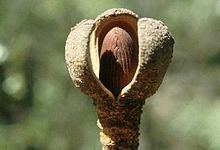
Like many parasitic plants, the affinities with non-parasitic plants are not obvious, and 19th and 20th century botanists proposed a variety of placements for the family. Molecular data places them in the Piperales, and nested within the Aristolochiaceae and allied with the Piperaceae or Saururaceae.
